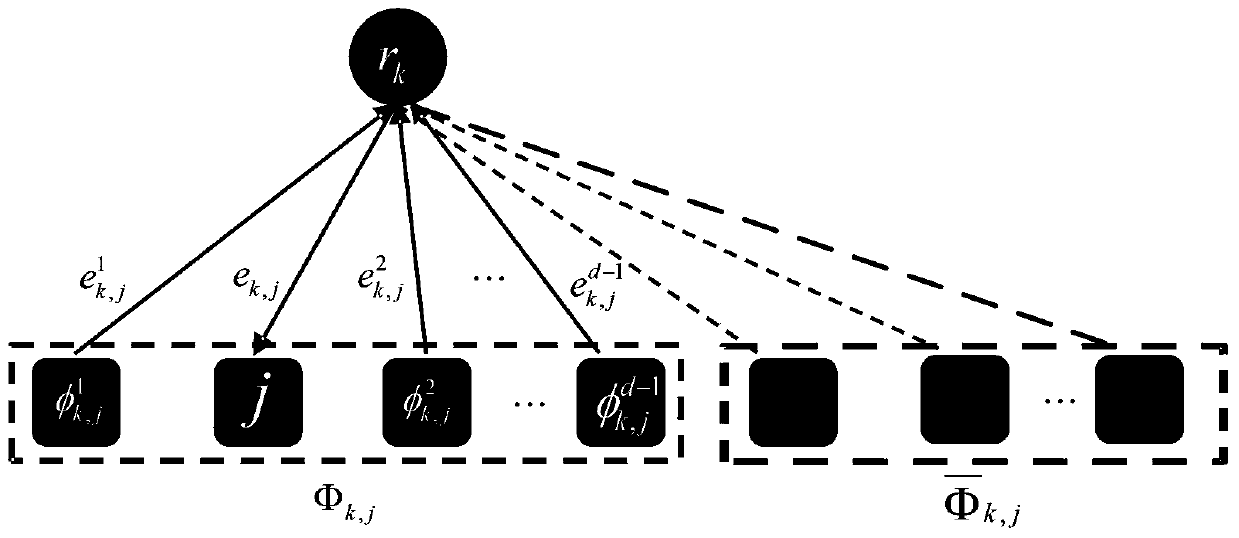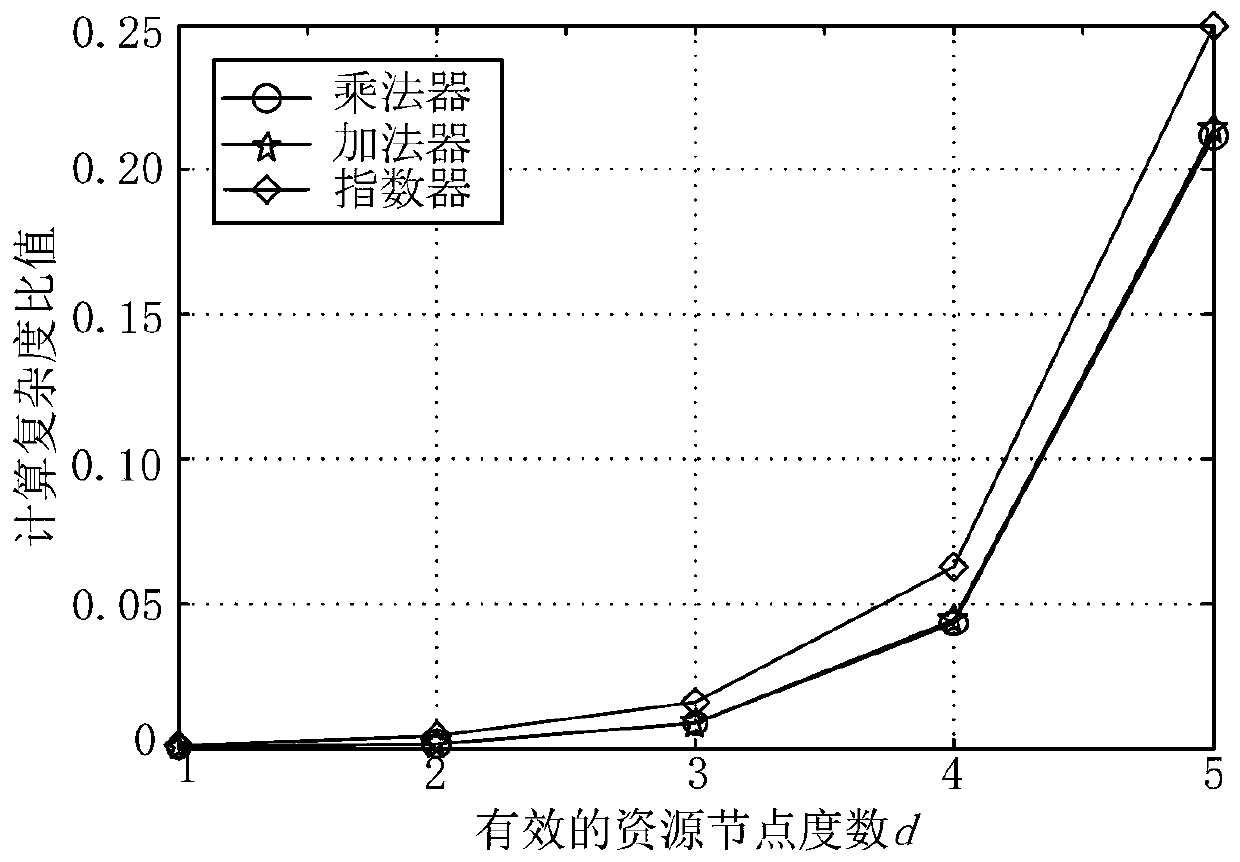A Low Complexity Sparse Code Multiple Access Detection Method
A sparse code multiple access, low-complexity technology, applied in the field of signal detection of wireless communication systems, can solve the problems of high computational complexity, can not meet the high-speed, high-efficiency, low-latency of 5G technology, etc., to reduce computational complexity, The effect of making up for message loss and reducing complexity
- Summary
- Abstract
- Description
- Claims
- Application Information
AI Technical Summary
Problems solved by technology
Method used
Image
Examples
Embodiment Construction
[0043] The technical scheme of the present invention will be described in detail below in conjunction with the accompanying drawings and embodiments.
[0044] According to the transmission conditions and the procedures of the detection process, the following parameters are initialized:
[0045] The number of user nodes J=96, the number of codewords in the codebook M=4, the number of resource nodes K=48, the system overload rate λ=200%, the degree of resource nodes d r =6, user node degree d v =6, the channel model is a flat Rayleigh fading channel; the user information bits are mapped to the corresponding codeword x through the SCMA encoder. After all user codewords are superimposed and transmitted through a flat Rayleigh fading channel, the received signal at the receiving end x j =(x 1,j ,x 2,j ,...,x K,j ) Τ is the SCMA codeword of user j, h j =(h 1,j , h 2,j ,..., h K,j ) Τ is the channel vector of user j, n~CN(0,σ 2 I) is Gaussian noise; the signal y receive...
PUM
 Login to View More
Login to View More Abstract
Description
Claims
Application Information
 Login to View More
Login to View More - Generate Ideas
- Intellectual Property
- Life Sciences
- Materials
- Tech Scout
- Unparalleled Data Quality
- Higher Quality Content
- 60% Fewer Hallucinations
Browse by: Latest US Patents, China's latest patents, Technical Efficacy Thesaurus, Application Domain, Technology Topic, Popular Technical Reports.
© 2025 PatSnap. All rights reserved.Legal|Privacy policy|Modern Slavery Act Transparency Statement|Sitemap|About US| Contact US: help@patsnap.com



